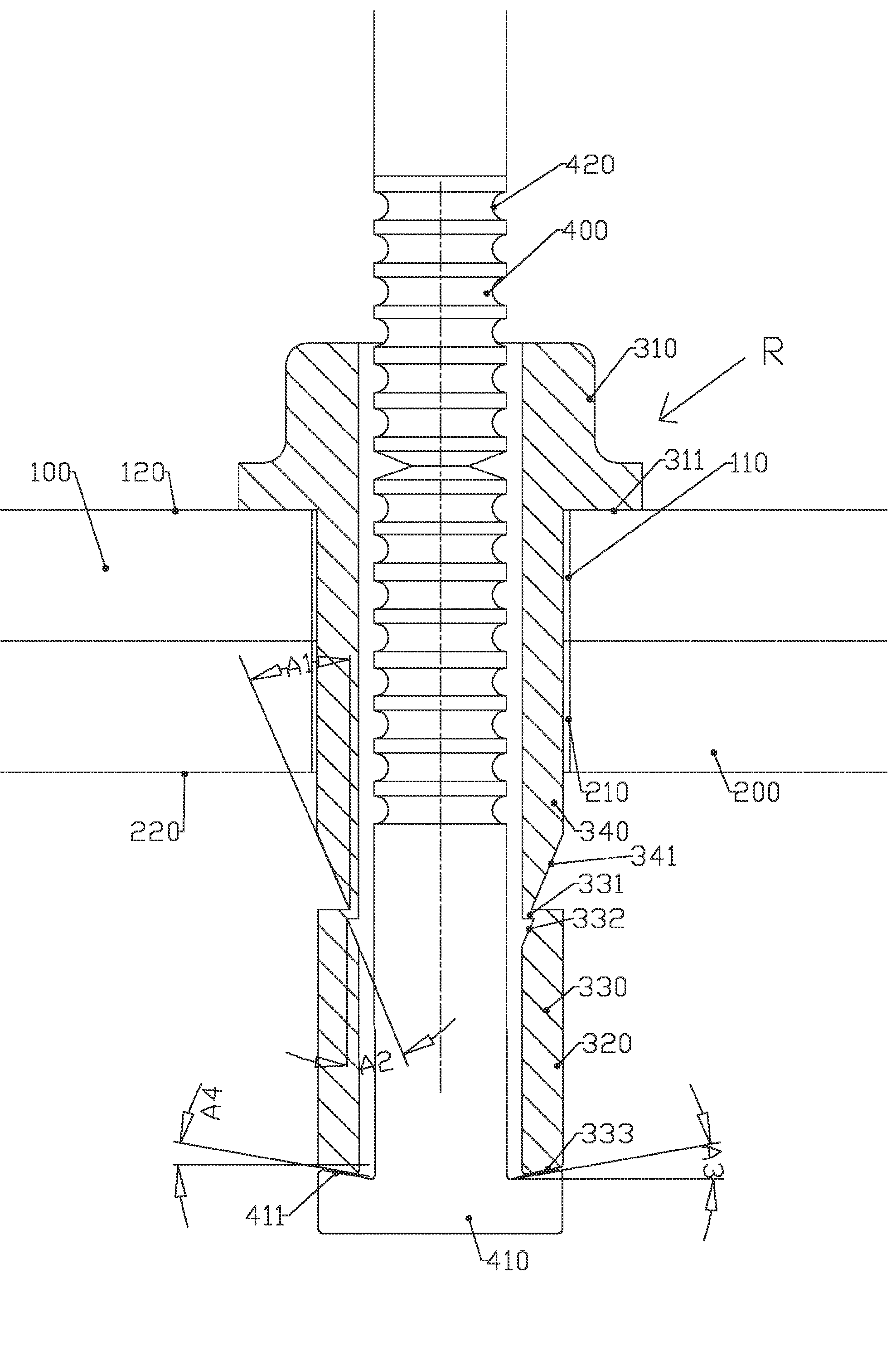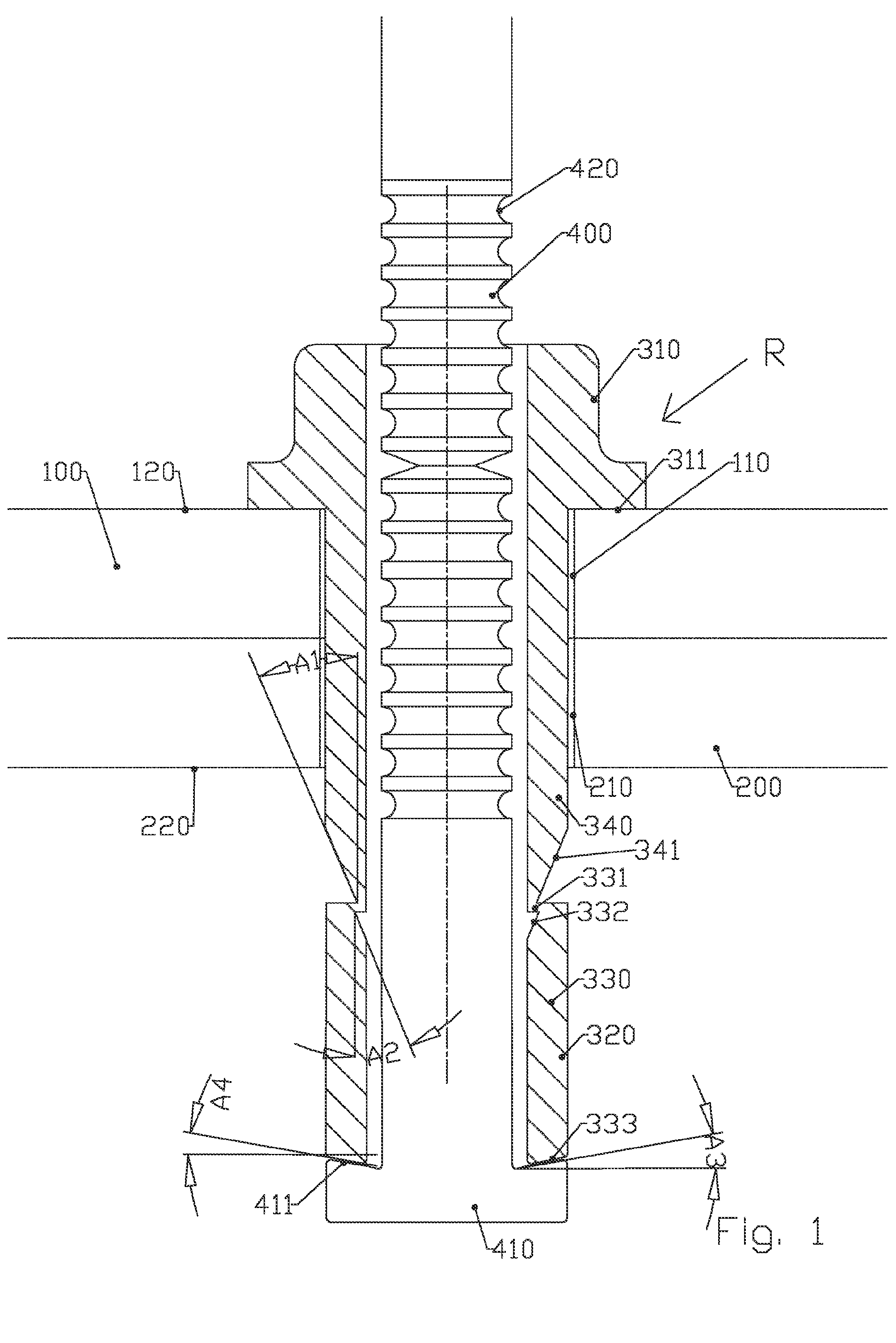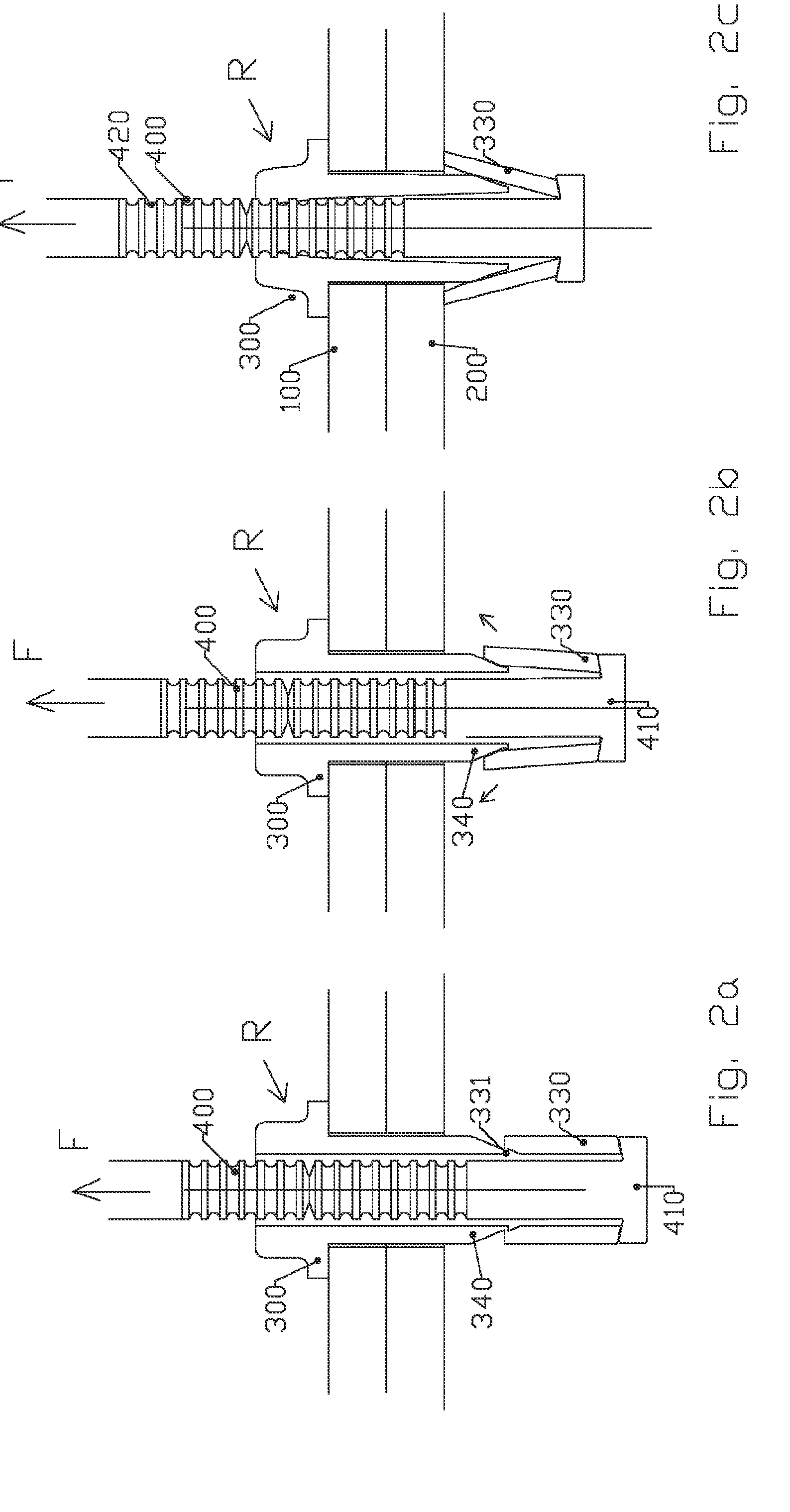Blind rivet in particular for fixing a structure and method for inserting same
a technology of fixing structure and blind rivets, which is applied in the direction of threaded fasteners, fastening means, dowels, etc., can solve the problems of requiring more material, requiring the manufacture and management of rivets comprising three elements, and not avoiding the final breaking of bulbs into two parts, etc., and achieves constant height
- Summary
- Abstract
- Description
- Claims
- Application Information
AI Technical Summary
Benefits of technology
Problems solved by technology
Method used
Image
Examples
Embodiment Construction
[0016]Starting from this established fact, the applicants carried out research aimed at proposing a blind rivet capable of solving the problems of distribution of the clamping forces by equipping the blind rivet with an improved sleeve which, under the action of the pulling force generated by the mandrel, deforms to offer a larger contact surface of the bulb with the metal sheet.
[0017]The blind rivet of the invention is of the type of that consisting of a deformable sleeve accommodating a divisible mandrel,
[0018]the assembly thus formed being positioned and passing through the apertures made substantially coaxial and formed in at least two elements to be assembled,
[0019]the sleeve comprising two ends:
[0020]a first end comprising a preformed head for defining a first support surface on the external surface of a first element, and
[0021]a second end which, under the action of deformation by pulling on the mandrel, comes to define a second support surface on the external surface of the ...
PUM
 Login to View More
Login to View More Abstract
Description
Claims
Application Information
 Login to View More
Login to View More - R&D
- Intellectual Property
- Life Sciences
- Materials
- Tech Scout
- Unparalleled Data Quality
- Higher Quality Content
- 60% Fewer Hallucinations
Browse by: Latest US Patents, China's latest patents, Technical Efficacy Thesaurus, Application Domain, Technology Topic, Popular Technical Reports.
© 2025 PatSnap. All rights reserved.Legal|Privacy policy|Modern Slavery Act Transparency Statement|Sitemap|About US| Contact US: help@patsnap.com



